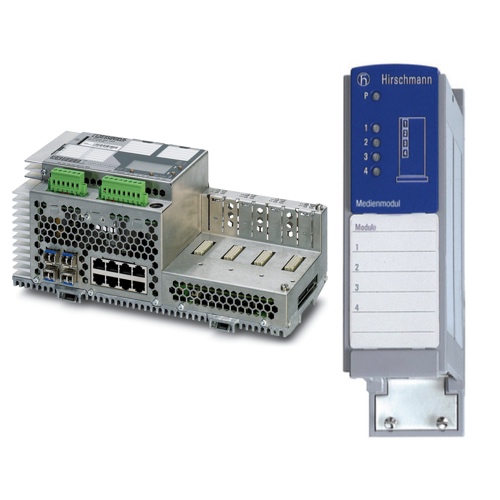Modular Switches

Ethernet switches are hardware devices that centralize communications among multiple connected Ethernet devices, such as computers Wi-Fi access points, IoT devices and servers, to one local area network (LAN). They manage the flow of data across the network by transmitting received network packets to one or more devices for which the packets are intended. Ethernet switches can identify every device connected to them and direct the traffic flow of the devices, which ensures the efficiency and security of the network.
Ethernet switches can be divided into two main categories: modular and fixed configuration. Modular Ethernet switches allow expansion modules to be added into the switch as needed, while fixed configuration Ethernet switches have a fixed number of ports.
More Information about Modular Switches
Phoenix Contact 2000 Series universal managed switches can be tailored to a system with a performance spectrum for standard and PROFINET applications. The FL SWITCH 2400 and 2500 versions are designed for flat control cabinets with their low depth and downward port outlet direction. The devices have 8 or 16 ports and can be used in extreme ambient conditions.
Hirschmann MSP switches offer complete modularity and various high-speed port options with up to 10 Gb/s. Optional Layer 3 software packages for dynamic unicast routing (UR) and dynamic multicast routing (MR) are available. MICE media modules are hot-swappable configurable media modules for MS20/30 switches and are used to attain the desired port density/type.
Industrial Ethernet Switch: How to Select
4 things to consider when selecting Ethernet switches.
Should the switch be managed or unmanaged? Unmanaged switches receive data from connected devices and route it to the desired destination. Managed switches perform the same functions as unmanaged switches, with the added benefit of being able to configure, manage and monitor the Local Area Network (LAN).
What types of devices will be connected to the switch and do they require power? If the devices require power, a Power Over Ethernet (POE) switch will be needed. This type of switch provides power to the devices that are connected to it, as long as those devices are designed for the same type of power. This is very common in IP cameras and surveillance equipment.
How many devices will connect to the switch? Ensure that the switch has enough available ports to accommodate all devices, with spare ports available for future expansion.
How much data will the switch transfer? If the switch is going to handle large amounts of data, it is going to need to operate at high enough speeds to accommodate it. The most common options are Fast and Gigabit. Fast allows up to 100 megabytes per second to be transferred, while Gigabit allows up to one Gigabit per second.


